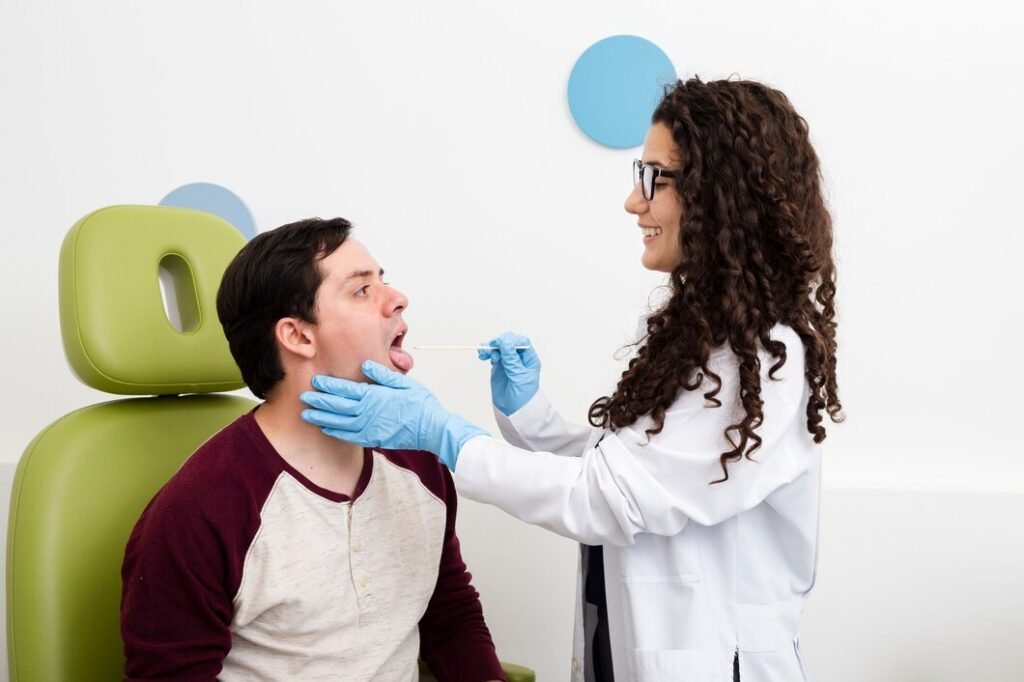Tongue base reduction surgery, also known as lingual tonsillectomy or genioglossus advancement, is a surgical procedure designed to treat obstructive sleep apnea (OSA) and other related breathing disorders by addressing obstruction in the upper airway. While continuous positive airway pressure (CPAP) therapy and oral appliances are commonly used to manage OSA, tongue base reduction surgery may be recommended for patients with severe or persistent symptoms who have not responded to conservative treatments. In this article, we will explore the purpose, procedure, potential risks, and benefits of tongue base reduction surgery to provide a comprehensive understanding of this surgical intervention.
Purpose of Tongue Base Reduction Surgery
Obstructive sleep apnea occurs when the muscles and soft tissues in the throat relax and collapse during sleep, leading to partial or complete obstruction of the upper airway and interruptions in breathing. The tongue base, located at the back of the tongue near the throat, can contribute to airway obstruction in some individuals, particularly those with large tongues or retrognathia (a condition where the lower jaw is set back).
Tongue base reduction surgery aims to address this obstruction by reducing the size of the tongue base or advancing the position of the tongue to create a more open and stable airway during sleep. By enlarging the space at the back of the throat, this surgical procedure can help improve airflow, reduce the severity and frequency of apneic events, and alleviate symptoms associated with obstructive sleep apnea.
Procedure Overview
Tongue base reduction surgery is typically performed under general anesthesia in a hospital or surgical center setting by an otolaryngologist (ear, nose, and throat surgeon) with expertise in sleep surgery. The specific technique used may vary depending on the patient’s anatomy, severity of obstruction, and other factors. However, the procedure generally involves the following steps:
1. Preoperative Evaluation:
- Before undergoing tongue base reduction surgery, patients undergo a comprehensive evaluation, including a medical history review, physical examination, and diagnostic tests such as polysomnography (sleep study) to assess the severity of obstructive sleep apnea and identify potential contributing factors.
2. Surgical Approach:
- The surgeon may use a variety of surgical approaches to access the tongue base, including transoral (through the mouth), transpalatal (through the roof of the mouth), or transcutaneous (through the neck). The choice of approach depends on factors such as the patient’s anatomy, the extent of tongue base obstruction, and the surgeon’s preference.
3. Reduction Techniques:
- Once access to the tongue base is obtained, the surgeon may employ various techniques to reduce the size of the tongue base or advance its position. These techniques may include partial or complete removal of lingual tonsils (lymphoid tissue at the base of the tongue), radiofrequency ablation, laser surgery, or advancement procedures such as genioglossus advancement or hyoid suspension.
4. Closure and Recovery:
- After the necessary modifications to the tongue base are completed, the surgical incisions are closed using dissolvable sutures, and the patient is transferred to the recovery area. Patients typically remain under observation for a period of time to monitor for any immediate postoperative complications before being discharged home.
Risks and Complications
Like any surgical procedure, tongue base reduction surgery carries potential risks and complications, including:
- Bleeding: Excessive bleeding during or after surgery may require intervention to control.
- Infection: Infection at the surgical site is possible and may require antibiotics or additional treatment.
- Swelling: Swelling of the tongue, throat, or surrounding tissues may occur temporarily after surgery and can contribute to discomfort or difficulty swallowing.
- Scarring: Scarring at the surgical site may occur, although efforts are made to minimize visible scarring and preserve normal function.
- Changes in Voice: In rare cases, alterations in voice quality or resonance may occur due to manipulation of the structures in the throat during surgery.
- Persistent or Recurrent Symptoms: Tongue base reduction surgery may not completely eliminate symptoms of obstructive sleep apnea in all patients, and some individuals may require additional treatment or revision surgery to achieve optimal results.
Benefits of Tongue Base Reduction Surgery

Despite the potential risks and complications, tongue base reduction surgery offers several potential benefits for individuals with obstructive sleep apnea, including:
- Improved Airway Patency: By enlarging the space at the back of the throat, tongue base reduction surgery can help improve airflow and reduce obstruction during sleep, leading to fewer apneic events and better oxygenation.
- Symptom Relief: Many patients experience significant improvement in symptoms associated with obstructive sleep apnea, such as snoring, daytime fatigue, and morning headaches, following tongue base reduction surgery.
- Reduced Dependence on CPAP: For patients who have not tolerated or benefited from CPAP therapy, tongue base reduction surgery may offer an alternative treatment option that reduces or eliminates the need for continuous positive airway pressure therapy.
- Quality of Life Improvement: By improving sleep quality and reducing the impact of obstructive sleep apnea on daily functioning, tongue base reduction surgery can enhance overall quality of life and well-being for affected individuals.
Conclusion
Tongue base reduction surgery is a surgical intervention designed to address obstruction in the upper airway and alleviate symptoms associated with obstructive sleep apnea. By reducing the size of the tongue base or advancing its position, this procedure aims to improve airflow, reduce the severity and frequency of apneic events, and enhance overall sleep quality and well-being for affected individuals.
While tongue base reduction surgery offers potential benefits for patients with obstructive sleep apnea, it is essential to undergo a comprehensive evaluation and discuss the risks, benefits, and alternatives with a qualified healthcare provider before proceeding with surgery.


